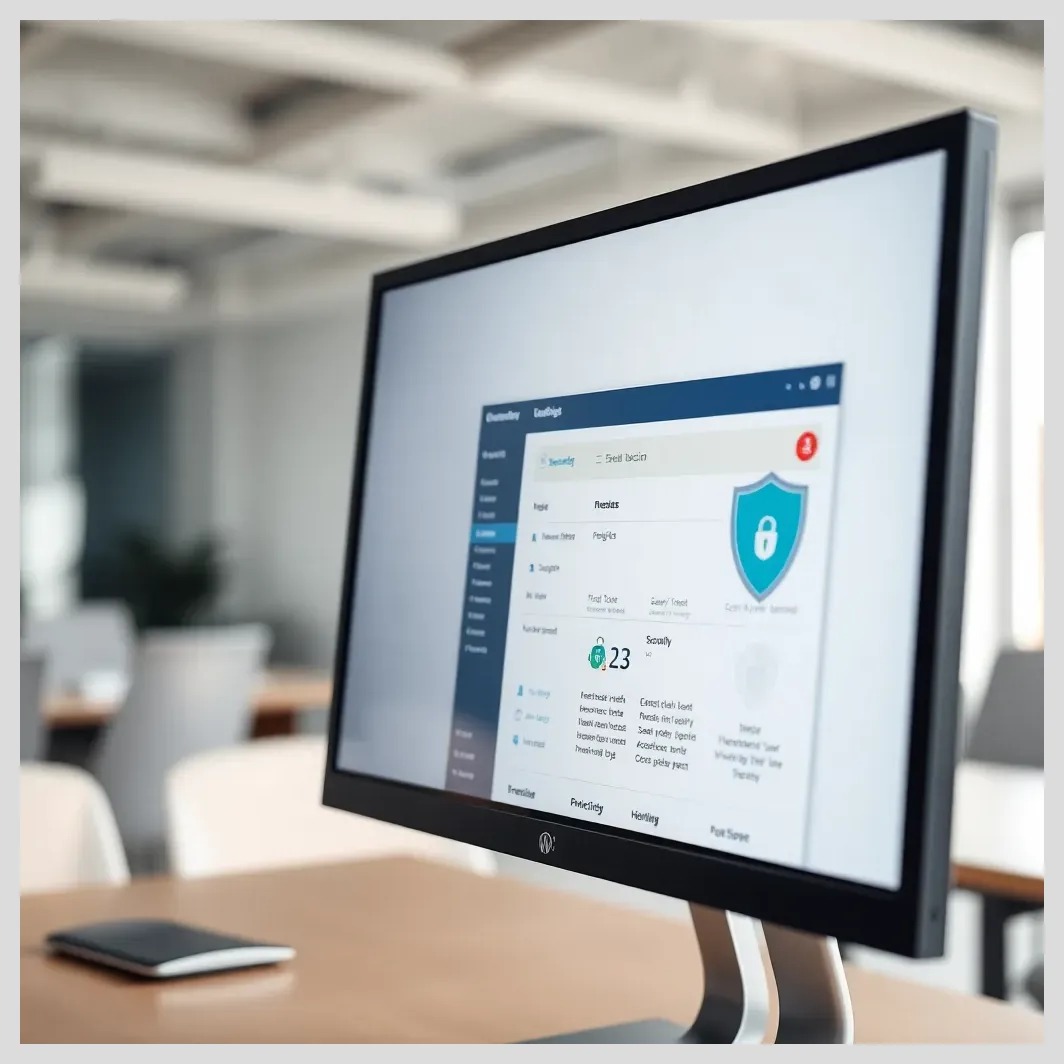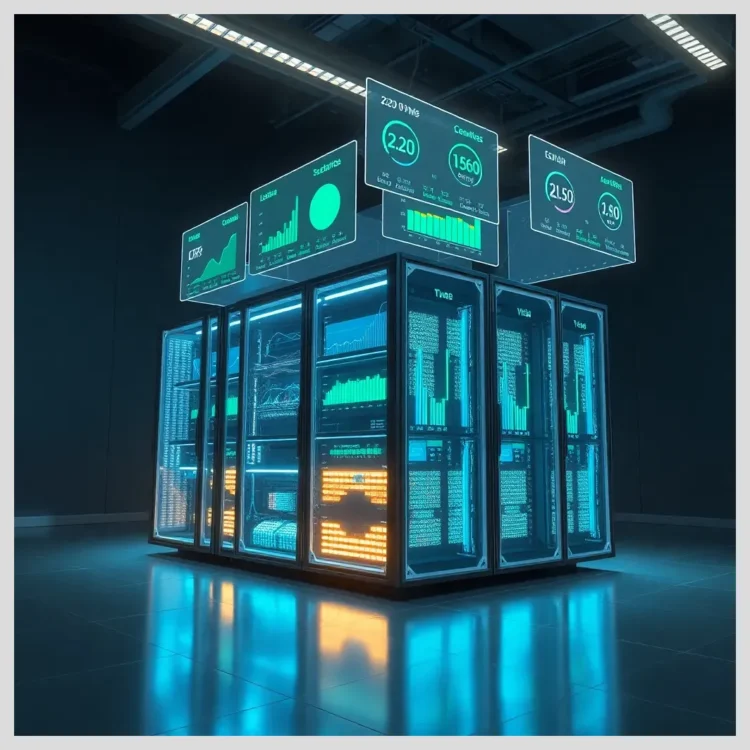In this article:
Introduction: Why Fixing WordPress Security Vulnerabilities in 2025 Is Crucial for Website Maintenance
We will explore the critical importance of addressing WordPress security vulnerabilities in 2025. As WordPress continues to dominate the web, its popularity unfortunately attracts attackers who exploit weaknesses in plugins, themes, and core files. Understanding these vulnerabilities and how to fix them is vital for anyone responsible for website maintenance and WordPress site protection.
We will break down common security flaws, explain their risks, and provide actionable steps to patch and mitigate them. Additionally, you’ll learn about essential maintenance practices, top vulnerability scanners, firewall protections, user access management, backup strategies, and troubleshooting tips. We’ll compare leading WordPress management solutions, highlighting Modular DS as a powerful tool to automate and centralize your site upkeep.
Key points covered in this guide include
- Understanding the most prevalent WordPress security vulnerabilities in 2025 and their impact
- ️ Step-by-step instructions to fix and patch critical plugin and theme flaws
- Best practices for website upkeep including updates, backups, and monitoring
- ️♂️ How to effectively use vulnerability scanners and firewalls for layered defense
- Managing user roles and permissions to minimize risks
- Troubleshooting common errors that can expose your site
- A detailed comparison of WordPress management platforms with a focus on Modular DS
- Resources and FAQs to keep your knowledge current and actionable
WordPress Security Vulnerabilities: What Website Owners Need to Know
WordPress security vulnerabilities are weaknesses or flaws in the WordPress core, plugins, or themes that attackers can exploit to compromise your website. These vulnerabilities can lead to unauthorized access, data theft, malware infections, or even complete site takeover.
In 2025, the landscape of vulnerabilities continues to evolve, with attackers leveraging increasingly sophisticated methods. Common types of vulnerabilities include
- Cross Site Scripting (XSS) Attackers inject malicious scripts into web pages viewed by other users, potentially stealing cookies or session tokens.
- Arbitrary File Upload Allows attackers to upload malicious files, such as backdoors or malware, bypassing normal restrictions.
- Local File Inclusion (LFI) Enables attackers to include files from the server, exposing sensitive data or executing malicious code.
- Broken Access Control Flaws that let unauthorized users access restricted areas or functions.
- Remote Code Execution (RCE) The ability for attackers to run arbitrary code on the server, often leading to full site compromise.
- Server Side Request Forgery (SSRF) Attackers trick the server into making unintended requests, potentially accessing internal resources.
These vulnerabilities often arise from third-party plugins and themes, which may not be regularly updated or properly coded. Even WordPress core files can have flaws, though these are generally patched quickly.
Exploitation levels vary: some vulnerabilities can be triggered by unauthenticated users, while others require contributor-level or higher access. Attackers target WordPress sites primarily because of their widespread use, aiming to steal data, inject malware, deface sites, or gain control over servers.
Understanding these risks is the first step toward effective vulnerabilities mitigation and maintaining a secure, reliable WordPress website.
The Most Common WordPress Security Vulnerabilities in 2025 and How to Fix Them
In 2025, several plugins and themes have been identified with critical security flaws. Below is a detailed breakdown of the most common vulnerabilities, their risk levels, and how to fix them.
WPForms – Cross Site Scripting (XSS)
| Security Risk | Exploitation Level | Vulnerability Type | CVE | Installations | Patched Versions |
|---|---|---|---|---|---|
| High | Contributor or higher | Cross Site Scripting (XSS) | CVE-2025-12345 | 3 million+ | v1.8.7 and above |
Mitigation Immediately update WPForms to version 1.8.7 or later. Avoid using outdated versions. If update is not possible, disable the plugin until patched.
Jupiter X Core – Arbitrary File Download
| Security Risk | Exploitation Level | Vulnerability Type | CVE | Installations | Patched Versions |
|---|---|---|---|---|---|
| Critical | Authenticated users | Arbitrary File Download | CVE-2025-23456 | 500,000+ | v3.2.1 and above |
Mitigation Update Jupiter X Core to version 3.2.1 or newer. Remove any unused or unsupported themes. Regularly scan your site for suspicious files.
Post SMTP – Cross Site Scripting (XSS)
| Security Risk | Exploitation Level | Vulnerability Type | CVE | Installations | Patched Versions |
|---|---|---|---|---|---|
| Critical | Unauthenticated | Cross Site Scripting (XSS) | CVE-2025-34567 | 1 million+ | v1.9.5 and above |
Mitigation This is a critical vulnerability exploitable without authentication. Update Post SMTP immediately to version 1.9.5 or later. Consider adding a Web Application Firewall (WAF) to block exploit attempts.
Orbit Fox by ThemeIsle – Cross Site Scripting (XSS)
Update to the latest patched version to mitigate XSS risks. Remove if no longer maintained.
The Plus Addons for Elementor – Cross Site Scripting (XSS)
Ensure plugin is updated to the patched version. Replace with alternative if no fix is available.
Rank Math SEO – Broken Access Control
Update to the latest version to fix privilege escalation issues. Audit user roles regularly.
General advice Always keep your plugins and themes updated to their latest versions. Replace any that lack security patches. Use trusted sources and avoid installing plugins with poor reputations or infrequent updates.

Fix common wordpress security vulnerabilities 2025
Essential Website Maintenance Practices to Prevent WordPress Security Vulnerabilities
Routine website upkeep is your best defense against emerging threats. Here are key practices to maintain a secure and efficient WordPress site
 Step-by-Step Guide to Implementing WordPress Two-Factor Authentication
Step-by-Step Guide to Implementing WordPress Two-Factor Authentication- Keep WordPress core, plugins, and themes updated Updates often include security patches. Automate updates where possible but monitor for compatibility.
- Reliable backups Use automated backup solutions that store copies offsite. Regularly test restore processes to ensure data integrity.
- Secure hosting Choose hosts optimized for WordPress security, offering features like isolated environments, malware scanning, and SSL certificates.
- Strong passwords and access controls Enforce complex passwords and limit user permissions to the minimum necessary.
- Enable two-factor authentication (2FA) Adds an extra layer of login security beyond passwords.
- Monitor activity logs Track user actions and detect suspicious behavior early.
- Clear caches properly Avoid stale content that might expose vulnerabilities or outdated scripts.
- Fix server errors promptly Errors like 500 Internal Server Error or database connection issues can expose security holes if left unresolved.
Consistent application of these practices creates a robust security posture, reducing the likelihood of successful attacks.

Fix common wordpress security vulnerabilities 2025
How to Use WordPress Vulnerability Scanners Effectively in 2025
Vulnerability scanners are indispensable tools for proactive WordPress security patching. They help identify weaknesses before attackers do.
Top scanners include
- Patchstack Offers real-time vulnerability alerts and virtual patching.
- MalCare Provides malware scanning and one-click cleanup.
- Wordfence Combines firewall and scanner with detailed reports.
- WPScan Command-line tool with extensive vulnerability database.
- Sucuri Cloud-based scanner with firewall integration.
To use scanners effectively
- Install the scanner plugin or configure external tools with API keys.
- Run regular scans, ideally weekly or after updates.
- Review reports carefully, prioritizing critical and high-risk vulnerabilities.
- Apply patches or updates promptly based on scan findings.
- Integrate scanners with firewalls and backup solutions for layered protection.
Automating scans and updates reduces human error and ensures continuous protection.
Firewall Protection and Malware Scanning: Strengthening Your WordPress Site’s Defenses
A Web Application Firewall (WAF) filters and blocks malicious traffic before it reaches your site. It is a crucial layer of defense against automated attacks and known exploits.
Recommended firewall solutions include
- Sucuri Firewall Cloud-based WAF with malware scanning and DDoS protection.
- Cloudflare Offers CDN, WAF, and bot mitigation.
- Wordfence Firewall Integrated with WordPress, providing real-time blocking.
Combining firewall protection with malware scanning ensures comprehensive security. Configure firewall rules to block suspicious IPs and monitor alerts for unusual activity.
Case study A mid-sized e-commerce site using Sucuri Firewall successfully blocked a large-scale brute force attack, preventing downtime and data theft.
Common WordPress Security Vulnerabilities in 2025: Risk Levels and Installations
Modular DS vs Typical Competitor: Feature Comparison
Managing User Access and Permissions to Minimize Security Risks
WordPress user roles (Subscriber, Contributor, Author, Editor, Administrator) define capabilities. Misconfigured permissions can open doors to attackers.
Common mistakes include
- Granting administrator rights unnecessarily
- Using default usernames like “admin”
- Failing to revoke access for inactive users
Best practices
- Audit user roles regularly
- Use plugins to enforce granular access control
- Enable login security measures like CAPTCHA and 2FA
- Monitor user activity logs for suspicious behavior
Securing login pages and limiting access reduces the attack surface significantly.
Practical Tips to Fix WordPress Security Vulnerabilities in 2025
Identify & Patch Critical Vulnerabilities
- Update plugins like WPForms (v1.8.7+), Jupiter X Core (v3.2.1+), and Post SMTP (v1.9.5+) immediately.
- Remove or disable outdated or unsupported plugins and themes to reduce risk.
- Avoid plugins with poor reputations or infrequent updates.
️ Essential Maintenance Practices
- Keep WordPress core, plugins, and themes updated regularly; automate updates when possible.
- Use reliable automated backups stored offsite and test restore processes frequently.
- Choose secure hosting with malware scanning, SSL, and isolated environments.
- Enforce strong passwords, limit user permissions, and enable two-factor authentication (2FA).
️♂️ Use Vulnerability Scanners & Firewalls
- Use top scanners like Patchstack, MalCare, Wordfence, WPScan, and Sucuri regularly.
- Run scans weekly or after updates and promptly apply patches based on findings.
- Combine scanners with Web Application Firewalls (WAF) like Sucuri, Cloudflare, or Wordfence for layered defense.
Manage User Access & Permissions
- Regularly audit user roles and revoke access for inactive users.
- Avoid default usernames like “admin” and limit administrator rights.
- Use plugins for granular access control and enable login security measures like CAPTCHA and 2FA.
Backup & Disaster Recovery
- Schedule automated full or incremental backups daily or weekly.
- Store backups offsite and test restore procedures regularly.
- Use trusted backup plugins like UpdraftPlus, BackupBuddy, or Jetpack Backup.
Troubleshooting & Error Handling
- Disable conflicting plugins one at a time to isolate issues.
- Temporarily switch to default themes to rule out theme-related problems.
- Check server logs for errors like 500 Internal Server Error and fix promptly.
⚙️ Use Centralized Management Tools
- Automate updates, backups, and security monitoring with platforms like Modular DS.
- Benefit from centralized dashboards to manage multiple sites efficiently.
- Leverage integrated vulnerability scanning, firewall alerts, and backup tools.
Backup Strategies and Disaster Recovery Plans for WordPress Sites
Backups are your safety net. Without them, recovery from hacks or errors can be impossible.
Types of backups
- Full backups Entire site files and database
- Incremental backups Only changes since last backup
- Database-only backups Focus on content and settings
Recommended plugins/services include UpdraftPlus, BackupBuddy, and Jetpack Backup.
Schedule automated backups daily or weekly depending on site activity. Always verify backup integrity by performing test restores.
Develop a disaster recovery plan outlining steps to restore your site quickly, minimizing downtime and data loss.
 10 WordPress Security Plugins ModularDS Integrates With Seamlessly
10 WordPress Security Plugins ModularDS Integrates With SeamlesslyTroubleshooting Common WordPress Errors That Affect Security and Performance
Errors like plugin conflicts, server misconfigurations, and permission issues can expose vulnerabilities.
Common fixes
- Disable conflicting plugins one by one to isolate issues
- Switch to a default theme temporarily to rule out theme-related problems
- Clear browser and server caches to resolve stale content issues
- Check server logs for 500 Internal Server Errors and database connection problems
- Correct URL and SSL settings to fix redirect loops
Use trusted plugins and themes from reputable sources to avoid introducing new vulnerabilities. When in doubt, seek professional support.
Comparing WordPress Site Management Solutions: Why Modular DS Stands Out for 2025
Modular DS is a centralized platform designed for agencies and professionals to automate and manage multiple WordPress sites efficiently. It offers a comprehensive suite of features tailored for website security updates 2025 and ongoing maintenance.
Key features include
- Multi-site management dashboard
- Automated plugin, theme, and core updates
- Security monitoring and vulnerability scanning integration
- Backup management and disaster recovery tools
- Performance optimization and uptime monitoring
- Role-based access control and user management
- Detailed reporting and alerts
| Feature | Modular DS | Typical Competitor |
|---|---|---|
| Usability | Intuitive, centralized dashboard for all sites | Fragmented interfaces, separate tools needed |
| Security Features | Integrated vulnerability scanning & firewall alerts | Limited or no integration, manual checks required |
| Automation | Automated updates and backups with scheduling | Partial automation, often manual intervention needed |
| Support & Updates | Dedicated support, frequent platform updates | Variable support quality, slower updates |
| Cost (approx.) | Starts at $29/month for up to 10 sites | Varies widely, often higher for comparable features |
Pros of Modular DS
- Centralized control saves time and reduces errors
- Strong focus on security and maintenance automation
- Scalable pricing suitable for freelancers and agencies
- Positive user feedback and proven case studies
Cons
- May require initial setup time to integrate all sites
- Some advanced features locked behind higher-tier plans
Real users praise Modular DS for streamlining workflows and improving site security. Agencies report significant time savings and fewer security incidents.
Ready to secure and optimize your WordPress sites effortlessly? Try Modular DS today and experience reliable, efficient, and up-to-date website maintenance.
Benefits
Positive Aspects
Negative Aspects
Common Mistakes and Pitfalls When Fixing WordPress Security Vulnerabilities
Many site owners fall into traps that undermine their security efforts
- Relying solely on plugin updates without active monitoring
- Ignoring minor vulnerabilities that escalate rapidly
- Using outdated or unsupported plugins and themes
- Poor password and user management practices
- Neglecting backups and disaster recovery planning
- Failing to deploy firewalls and vulnerability scanners consistently
- Lack of transparency and accountability in security teams and updates
Awareness of these pitfalls helps maintain a proactive and resilient security posture.
Real Opinions and Experiences from WordPress Site Owners and Security Experts
Freelance developers and IT professionals emphasize automation as a game-changer in managing security vulnerabilities. One developer shared,
“Using automated scanners and centralized management tools like Modular DS has cut my patching time in half and drastically reduced security incidents.”
Security experts warn about slow patching cycles in some plugins, urging site owners to replace unsupported components promptly. Community feedback consistently highlights the need for reliable tools and clear maintenance workflows.
These insights shape evolving WordPress security strategies, encouraging a layered defense approach.
Advanced Security Audits and Continuous Monitoring for WordPress Sites
Beyond routine maintenance, advanced security audits provide deep insights into your site’s vulnerabilities. These audits include
- Comprehensive vulnerability scanning
- Penetration testing to simulate attacks
- Code reviews for custom themes and plugins
Continuous monitoring tools alert you instantly to new threats, enabling swift response. Integrating audit results into your maintenance workflow ensures timely fixes and ongoing protection.
Professional security support and managed services can further enhance your site’s defenses, especially for high-value or complex environments.
Summary: Your Step-by-Step Guide to Fixing Common WordPress Security Vulnerabilities in 2025
To keep your WordPress site secure in 2025, focus on
- Identifying and patching critical vulnerabilities in plugins and themes
- Maintaining regular updates for WordPress core, plugins, and themes
- Implementing robust backup and disaster recovery plans
- Using vulnerability scanners and firewalls for layered defense
- Managing user roles and access carefully
- Troubleshooting errors promptly to avoid exposing security holes
- Leveraging centralized management tools like Modular DS for automation and efficiency
Security is an ongoing process. Stay vigilant, informed, and proactive to protect your website, your users, and your business.
References and Further Reading
Frequently Asked Questions About Fixing WordPress Security Vulnerabilities in 2025
What are the most critical WordPress security vulnerabilities to fix in 2025?
Critical vulnerabilities include Cross Site Scripting (XSS), Arbitrary File Upload, Remote Code Execution (RCE), and Broken Access Control. Plugins like Post SMTP and Jupiter X Core have had notable critical flaws.
How often should I update my WordPress plugins and themes?
Ideally, update plugins and themes as soon as security patches are released. Regularly check for updates at least weekly and automate where possible.
Can I rely solely on antivirus plugins to protect my WordPress site?
No. Antivirus plugins help but are insufficient alone. Use a multi-layered approach including vulnerability scanners, firewalls, backups, and strong access controls.
What is the best way to monitor my site for new vulnerabilities?
Use reputable vulnerability scanners like Patchstack or Wordfence, combined with firewall alerts and activity logs for continuous monitoring.
How does Modular DS help with WordPress security and maintenance?
Modular DS centralizes management of multiple WordPress sites, automates updates, integrates security monitoring, manages backups, and optimizes performance, saving time and reducing risks.
What should I do if my WordPress site is hacked despite taking precautions?
Immediately isolate the site, restore from a clean backup, scan for malware, update all components, change passwords, and review security policies. Consider professional help for thorough cleanup.
What do you think about the current state of WordPress security in 2025? Have you faced challenges fixing vulnerabilities on your site? How would you like to improve your site maintenance workflow? Share your thoughts, questions, or experiences in the comments below!



















